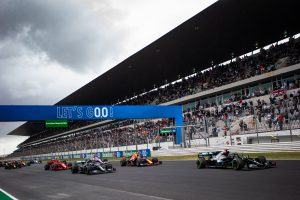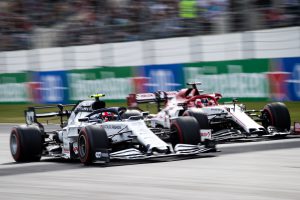Up Next

No-one has ever before had 91 other grand prix victories to compare their 92nd to. And Lewis Hamilton’s memory isn’t good enough to know how this one ranked. But it was one of his very best.
In a crazy, bewildering set of conditions, he worked out the code and once he’d done so, was unstoppable, re-catching and passing the other Mercedes of Valtteri Bottas – who had passed him on the opening lap and pulled out 2.3s while Hamilton’s brain fizzed trying to understand the pattern of the tyres, the conditions and what he needed to do.
But with the code solved, Hamilton stepped it up a gear, came back at his team mate well before the first stops and passed him on track. Actually overtook.
The move began at the end of lap 18 through the long, interlinked turns 14-15 leading onto the pit straight. Bottas just didn’t have the rear grip of Hamilton through there and – for reasons we’ll explore in a moment – Hamilton was able to sit right in his wake.
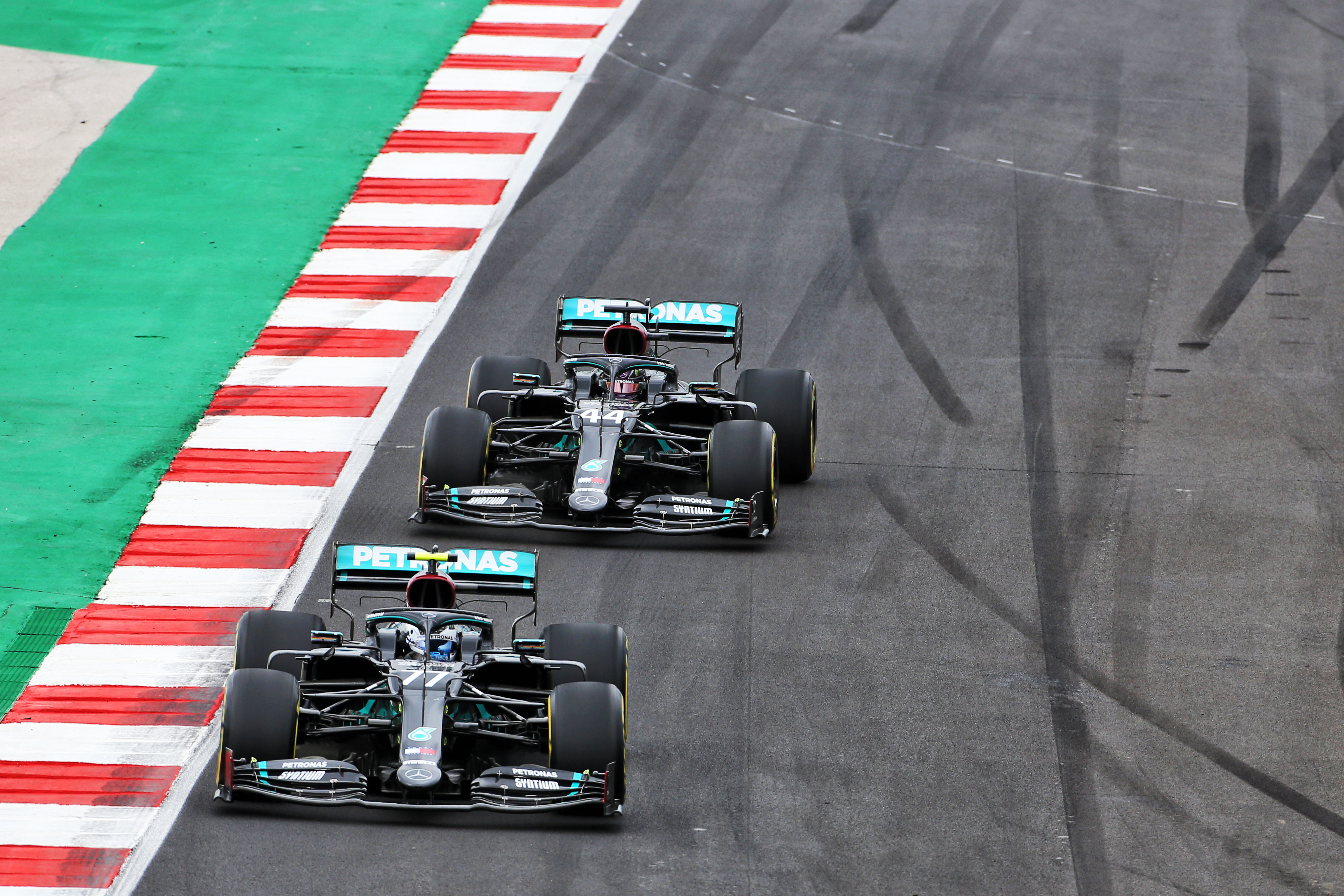
It was as if the aero turbulence of the last few years had all just been a mirage and this weird, cold, damp Portimao Sunday was the actual reality. It allowed Hamilton to enter the straight still right on his team-mate’s tail and as Bottas hugged the pitwall, Hamilton with DRS was able to drive right around him – and pull away at an impressive rate.
Poor old Bottas – who’d been gazumped to pole by Hamilton after being quickest in every single session up until the moment of Hamilton’s final Q3 lap – was taken to the cleaners all over again. He seemed dazed immediately after climbing from the car. “I don’t understand.”
Lewis later explained: “Today was all about tyre temperatures. I had to adapt so much. It was so difficult out there, trying to understand what was happening. So I was trying different lines, the wind was changing all the time, changing how the car behaved at different corners.”
This requirement to improvise new solutions is perfect Hamilton territory – think back to when the wind suddenly changed direction during qualifying at Paul Ricard last year and Hamilton stole what had looked a sure-fire Bottas pole. It was like that in the race here and it left Bottas – who is superb at finding the groove of his own personal sweet spot and staying in it with great repeatability when conditions are unchanging – flat-footed.
“When you have tailwind you have to minimise the loss,” explained Hamilton. “So my set up was less about qualifying and more about the race. That enabled me to go one better today. I had to keep up the pace to keep the temperatures. That was the key to everything. It’s so satisfying. Especially because this weekend I challenged the team on certain things, certain assumptions and it ended up giving me the speed today.”
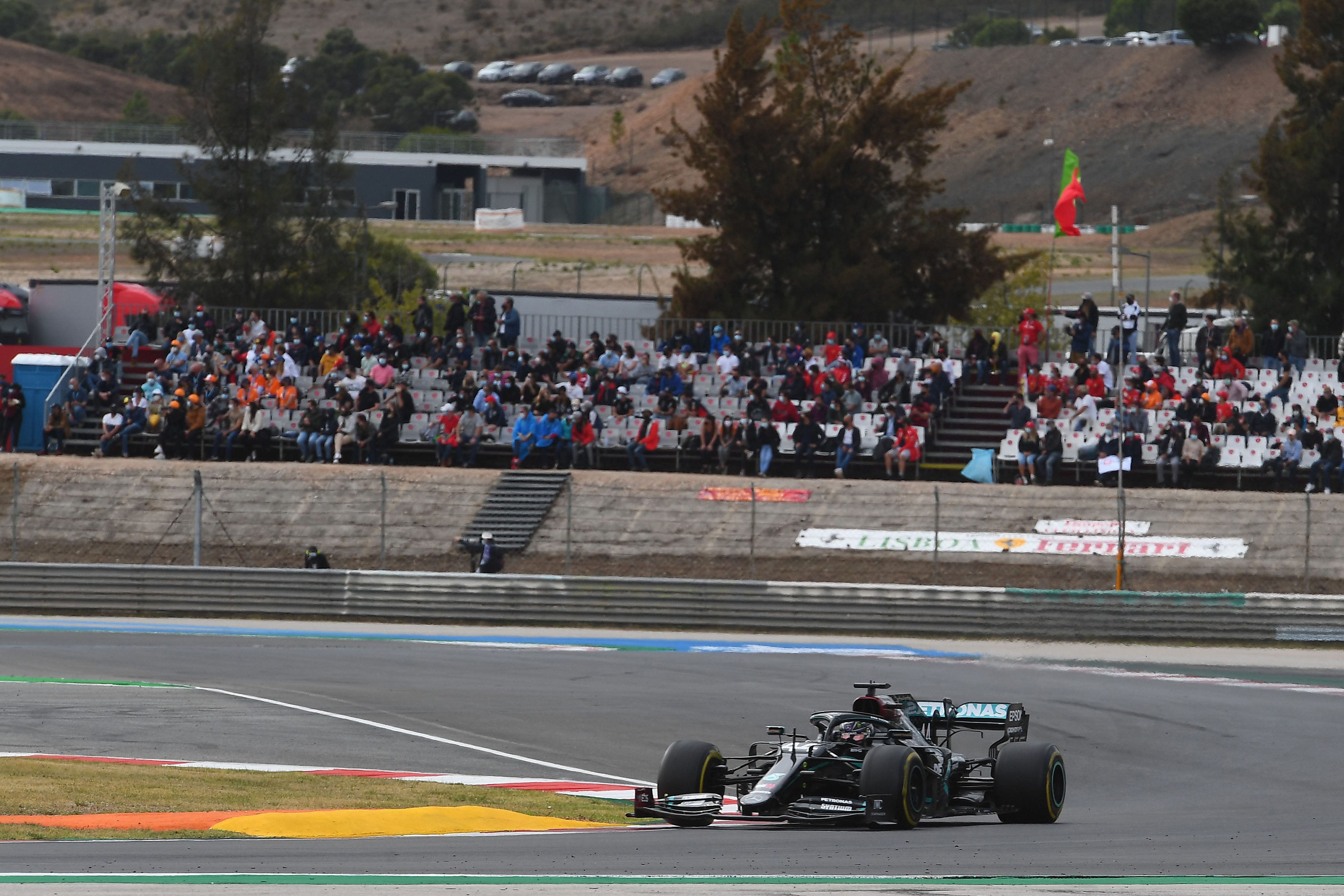
Contrast this with Daniel Ricciardo’s summary of his own race in the Renault. “On the mediums I just struggled to keep temperature in the tyre. I couldn’t go quick enough, long enough, to get the tyres in a happy place. You try to push to get the temperatures, then you make a little mistake and you lose the temperatures…”
It was almost certainly not as difficult to cross that virtuous threshold if you had the downforce of a Mercedes rather than a Renault – or of any other car, with the possible exception of a Red Bull. But Red Bull took themselves out of the equation by choosing to qualify in Q2 on the soft tyre rather than the mediums of the Mercs (and Charles Leclerc’s Ferrari).
“I don’t think it mattered in the end,” said Max Verstappen, a distant third. “If we’d gone on the medium we’d just have followed them and then I would have lost time to them when we switched to the hards.” It probably wouldn’t have changed the result, that’s true. But it would almost certainly have pushed the Mercs harder if Verstappen had started on the medium – for it was simply a much better tyre than the soft on the day. Except for the first few laps, as the soft found instant temperature and the medium didn’t.
We can thank the particular circumstances of the 2020 season for how good this race was. This crazy left-field bunch of variables it threw up around a venue we were never going to visit on a late-notice resurfaced track at a temperature we were never going to encounter made it an incredibly difficult puzzle to decode – and it all had to be done on the hoof, in the heat of battle.
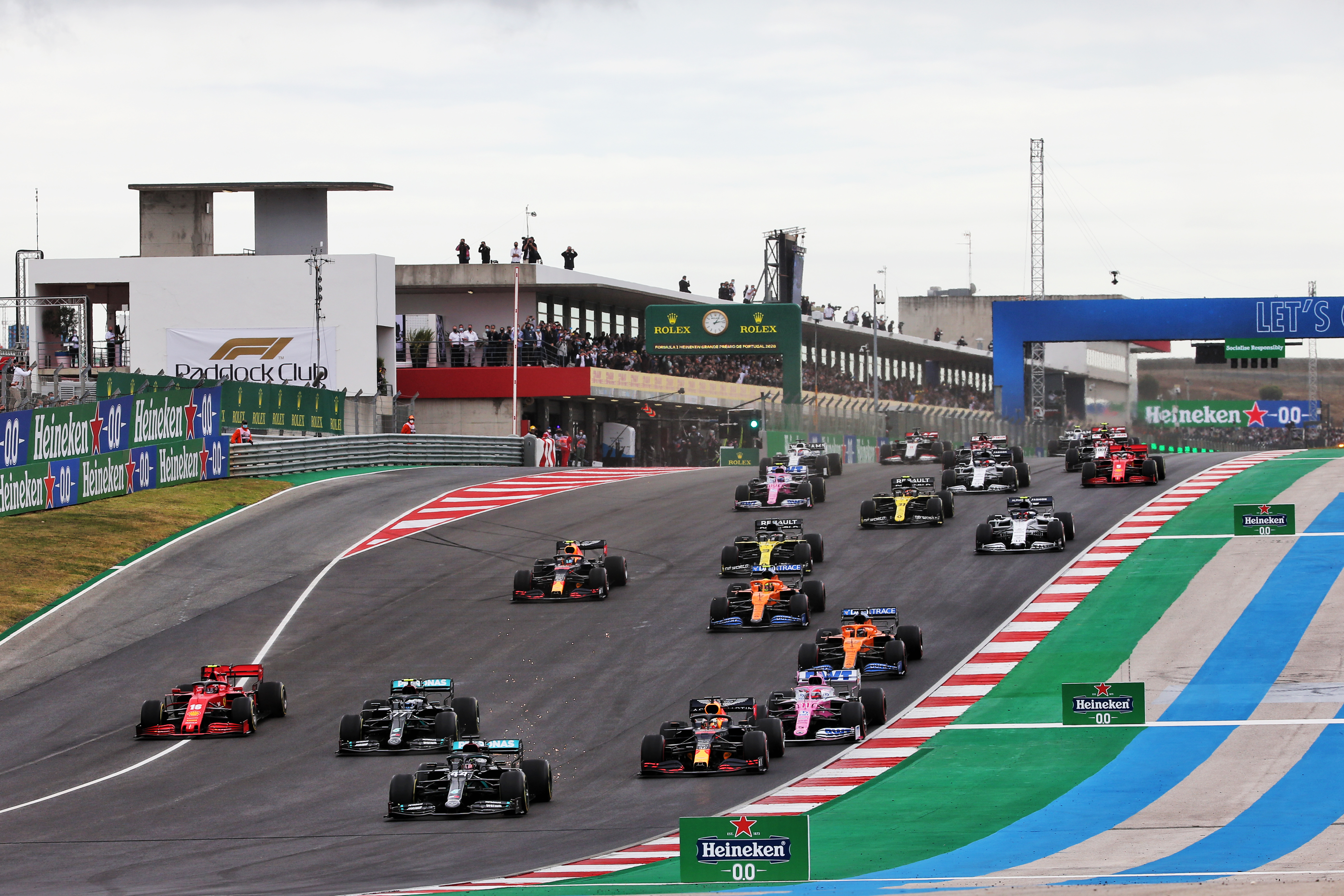
Heat was what it was all about. Or rather the lack of it. Whenever it’s a little too cold for the tyres, whenever it’s almost impossible to overheat them, the racing is invariably great. So it was here – just as at Silverstone 2018.
There are two factors driving this relationship between temperatures and quality of the race. Firstly, there is a huge variation between cars almost by the lap, unrelated really to how well they’ve qualified. Secondly, because the tyres aren’t overheating when close behind another car, you can hang on and actually race. And we saw so much racing, real old-fashioned, wheel-to-wheel racing. On a track layout that didn’t obviously suggest it on casual inspection.
That combination of a gripless track surface, tarmac oils still oozing from it, cool track temperatures, a bit of drizzle and a gusty, variable wind – and the very different ways the two main tyre compounds reacted to those variables – gave us the great crazy early laps where those (mainly the soft-tyred guys) who’d got adequate temperature into their tyres ran rings around those (mainly those on the mediums) who hadn’t.
That’s what had Carlos Sainz’s McLaren overtaking both Mercedes within the first two laps to take the lead. It’s what had Kimi Raikkonen’s Alfa into a stunning sixth place by the seventh corner from a starting position of 16th. But as quickly as those softs had warmed, so they began to grain. They were doing this just as the mediums were finally coming up to temperature – and so we then had the medium-shod guys racing the soft-shod cars to get their positions back again.
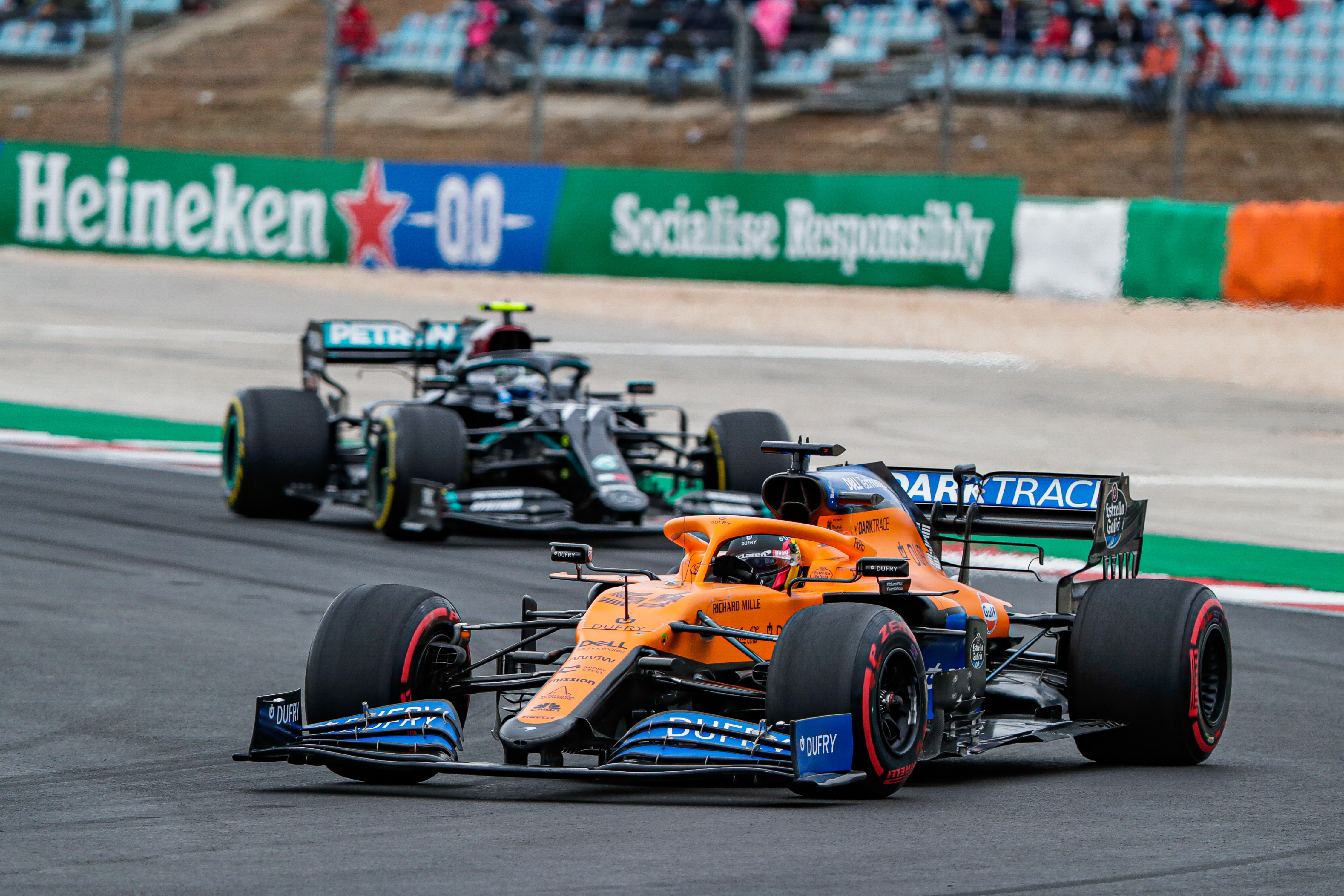
The soft just grained up its left front, no matter what. It didn’t suffer any heat degradation – none of the compounds would run hot enough to induce that usual phenomenon – so once you got it through the graining phase it was still pretty much as quick as when it was new. So you could do a long stint on it and therefore it wasn’t a disaster strategically, didn’t push you into a two-stop, and it was this which enabled Pierre Gasly and Sainz to drive great races to fifth and sixth respectively despite being obliged to start on the soft.
But if you pushed at all hard on it, it grained (they were even graining on the out-lap to the dummy grid on some cars). So you couldn’t attack. If you were quick enough to get through Q2 on the medium, the optimum strategy was, without question, medium-hard.
That’s how Mercedes was so far ahead of Verstappen. That’s how Leclerc pushed Verstappen uncomfortably close for a time around the stops in a Ferrari which, though much improved, is still nowhere near a Red Bull. The medium’s superiority over the soft was also how Esteban Ocon used qualifying outside the top-10 to beat Renault team mate Daniel Ricciardo to eighth, just behind the Racing Point of Sergio Perez, who rescued a good result from an unpromising trip to the pits for a new nose after tangling with Verstappen on that crazy first lap.
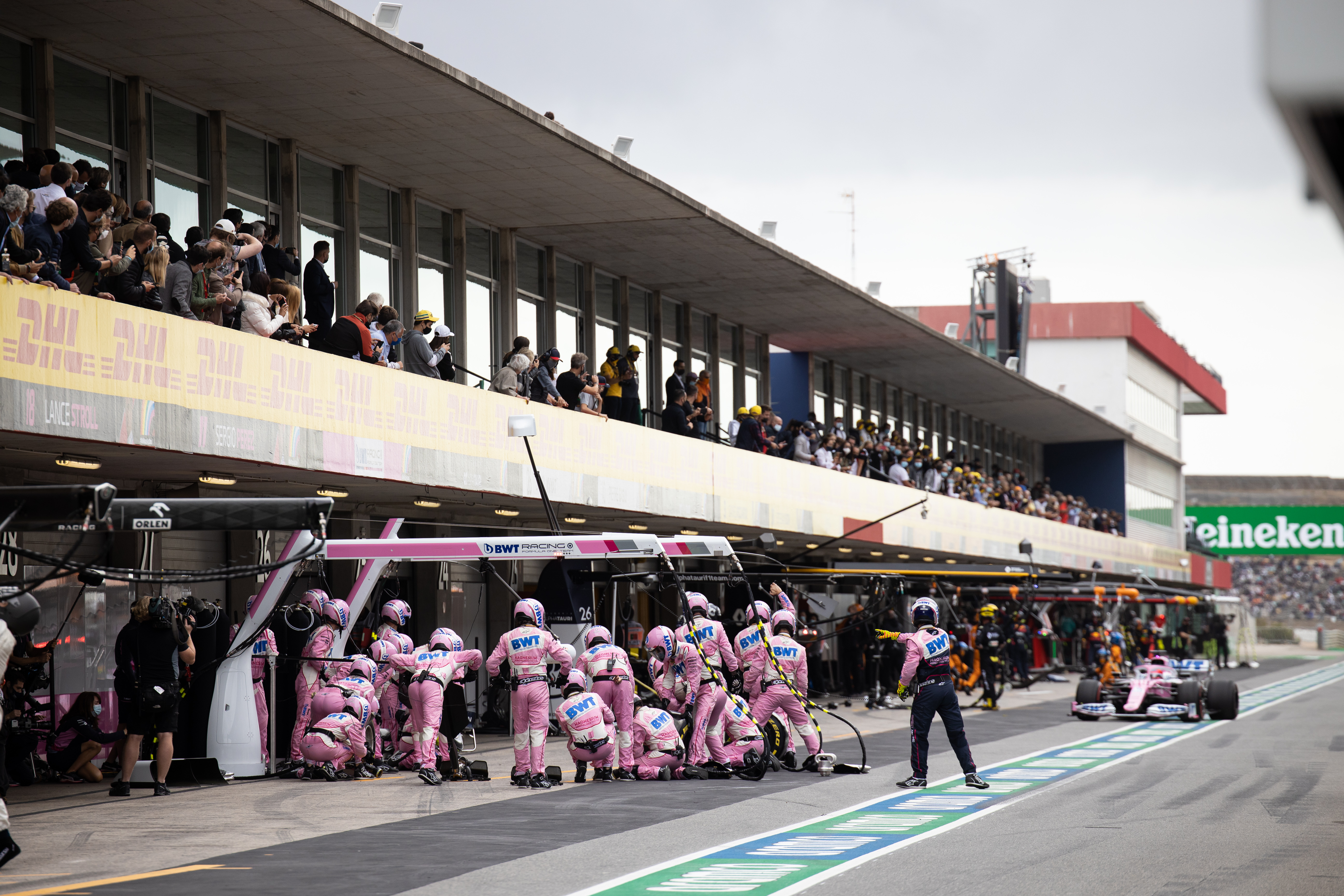
His dangerous late-race defence of fifth place from Gasly was deemed enough for a reprimand and penalty points. Gasly made the move the following lap and was followed through by Sainz but the incident rather took the sheen off what had been a tenacious performance from Perez.
A light drizzle had bubbled up by the time the lights went out – so making those tyre temperatures even more difficult to generate. Even among those starting on softs, some cars got front tyre temperature better than others. The McLarens, which had a general understeer balance, being especially sensitive to tailwinds, switched them on very quickly, as did the Alfas. The Red Bulls did not. That defined what happened on the first lap, with Sainz and Raikkonen as the stars.
Sainz, after a super start from seventh, got straight into it. Fifth around Turn 1, making up a place as Perez was clashed aside by Verstappen at Turn 4, then with way more grip on the brakes than the Red Bull into the hairpin of Turn 5, but still emerging behind as Verstappen used the run-off to maintain momentum. Sainz easily nipped by on the exit of the uphill Turn 8, the Red Bull running out wide, fronts evidently still not up to temperature. That put Sainz tight behind the two Mercedes, which had swapped positions at Turn 8 – Bottas slicing inside Hamilton, as the latter just wasn’t feeling it on the cold mediums.
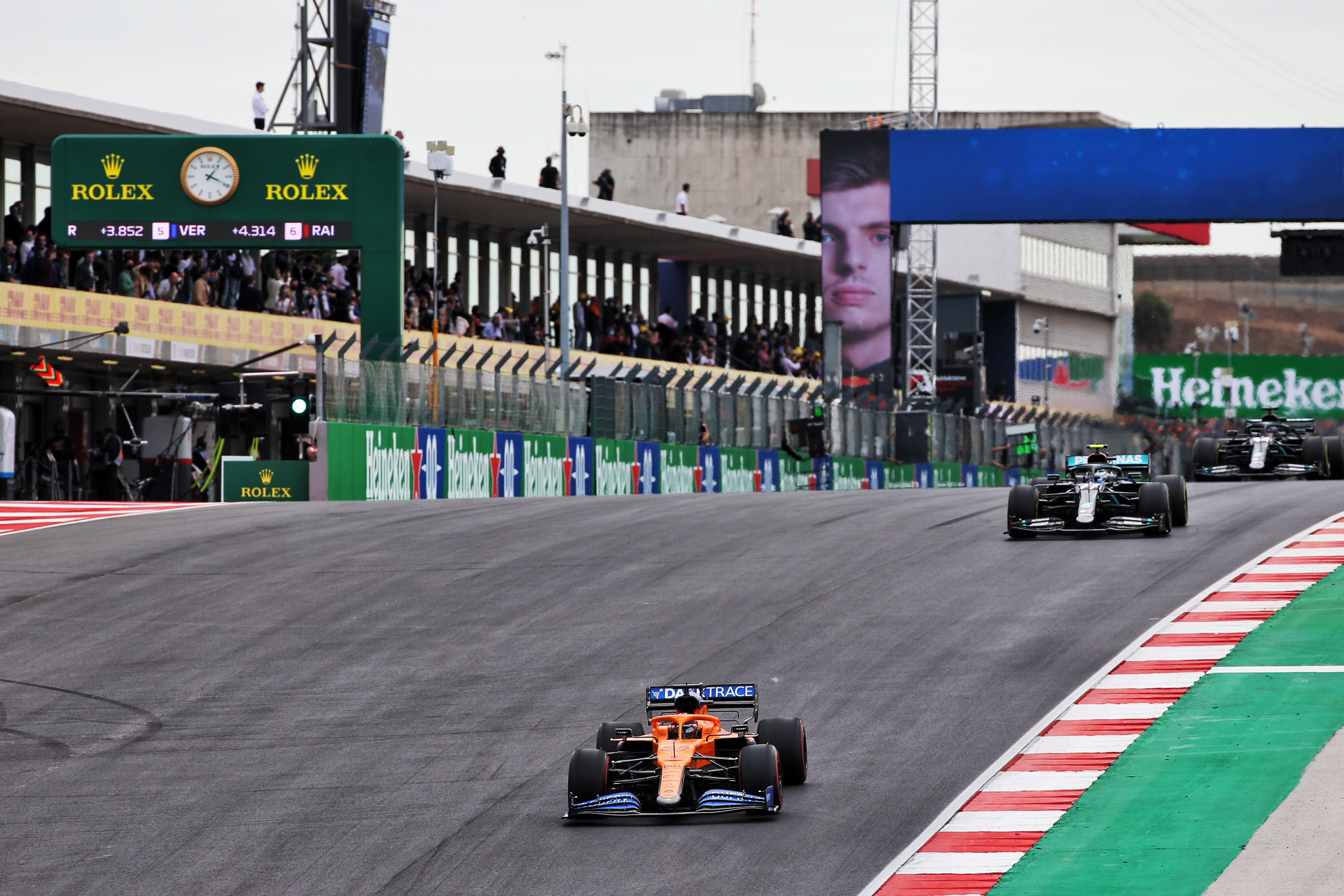
As a generalisation, Bottas tends to generate front tyre temperature easier than Hamilton, who tends to be harder on the rears. “In Turn 6 I had a massive oversteer moment,” related Lewis, “and realised I still had low grip. Valtteri came by, I was overly cautious, I would say, through seven and kind of just generally let him by into eight, didn’t even defend as he seemed to have more grip than me at that moment.”
This was the moment where Hamilton’s confidence, and his bigger-picture vision, played well. He wasn’t feeling it – so he let first Bottas, then Sainz, through, knowing that wasn’t going to be the end of it. He’d wait for the temperatures to come up and work on trying to understand the puzzle then.
Sainz took the lead from Bottas on the second lap, on the exit of the Turn 5 hairpin, as if it were child’s play. Just way more grip – and away he went, orange McLaren leading a Grand Prix.
Raikkonen’s first lap was even more dramatic, helped by being a soft-tyred car with five medium-shod cars directly ahead of him on the grid. He was a dizzying blur of moves this way and that, always in the right place, more grip than everyone around him, the quality of the cars he was racing improving turn by turn: a Williams initially, a Renault next corner – until by Turn 8 he was snapping at Verstappen’s heels.
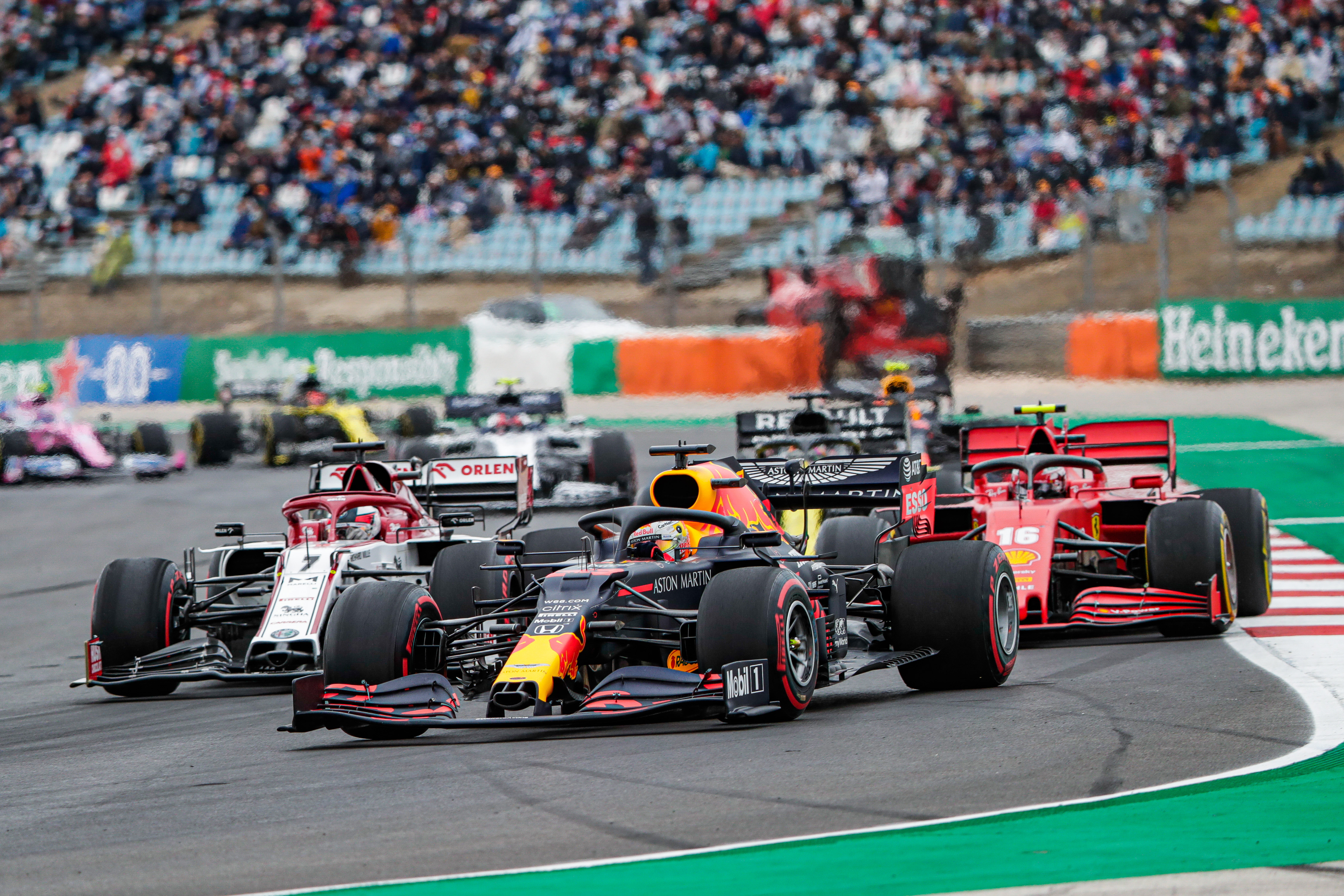
“It was incredible,” said Max. “He must’ve been using his rally skills.” It was a little snapshot of the core ability Kimi still possesses at 41 years old, but was also very much about how the fast cars had the least grip initially and any understeering cars on softs briefly looked terrific.
Sainz had a lead of 1.3s over the two Mercs by the end of the third lap and Lando Norris had used the McLaren’s traits to pass Verstappen for fourth, with Raikkonen just beginning to fade in sixth as the tyres of Ricciardo, Leclerc and Gasly came up to temperature.
Lap four was when everyone finally got tyre temperature and normal order began to be resumed – so Bottas put a DRS move on Sainz to retake the lead to begin lap six, Verstappen having done the same to Norris the previous lap. Hamilton DRS’d Sainz to begin lap seven, Verstappen followed him past a lap later. Leclerc put moves in quick succession on Ricciardo, Raikkonen and Norris. By lap 12 he was past Sainz too and only 4s behind Verstappen.
The Mercs edged steadily away from Verstappen and Leclerc as Sainz fell into no-man’s land and Norris, his softs graining badly, was passed for fifth by Gasly, getting his softs to work rather better. Ricciardo was an early pitter to get off the softs, Raikkonen fell back to eighth ahead of a dicing Stroll and Albon. The latter had a disastrous opening lap, unable to generate tyre temperature. It would define another very disappointing race for him, in traffic and destroying his tyres on his way to a lowly two-stopping 12th, lapped by his team-mate.
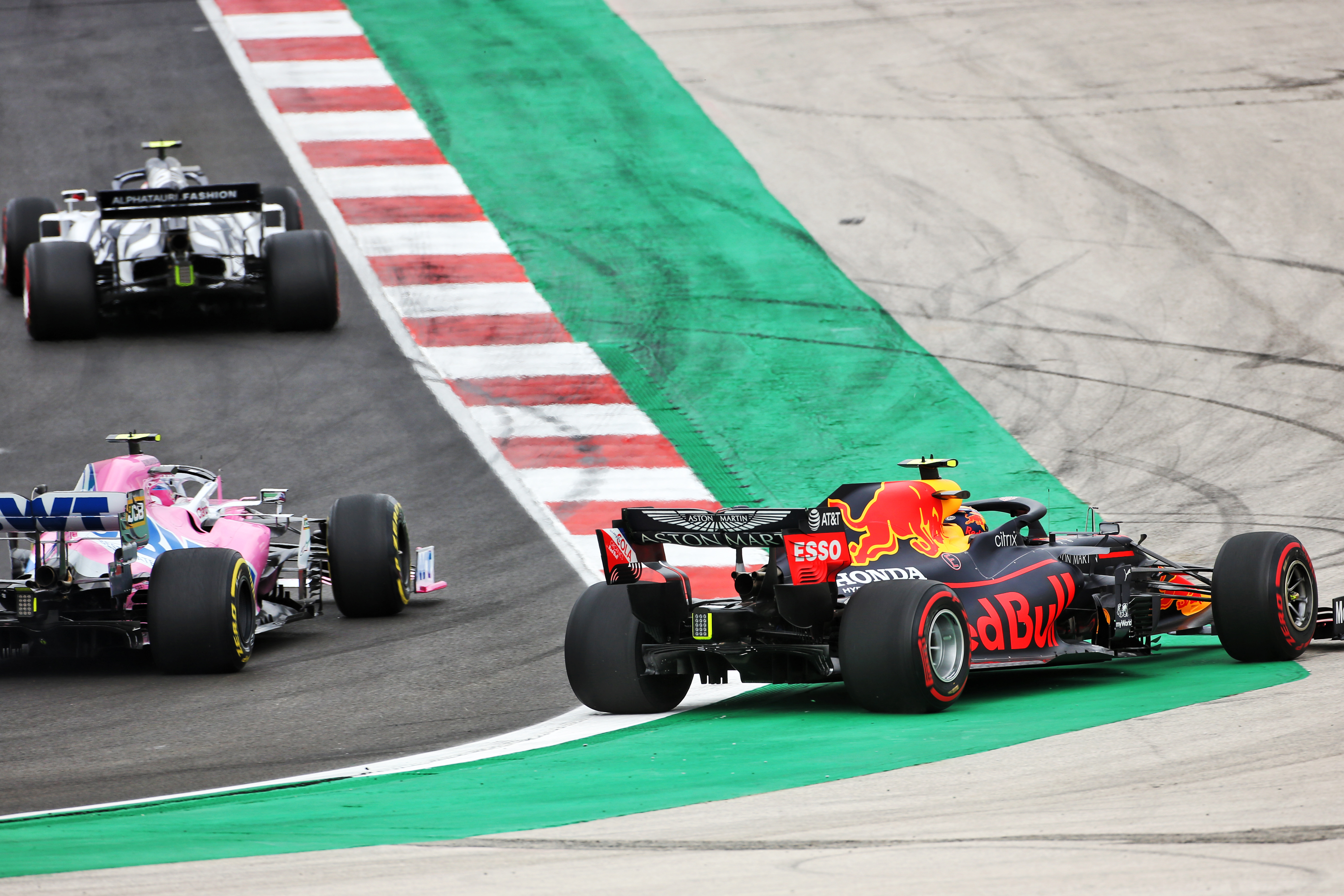
Vettel had suffered similarly on that first lap on his mediums but gradually made progress past the likes of Giovinazzi and Russell, to be dicing with Raikkonen for the final point by the end. Stroll caught the tyre-graining Norris and on the 18th lap had DRS on him down the pit straight. Norris defended the outside but Stroll kept coming, taking to the entry kerb to try for a doomed pass around the outside. They collided and both damaged cars were in the pits next lap, out of contention.
The drizzle had faded for now. But it was damp enough that the vortices off the rear wing tips were visible as the cars continued to slip and slide their way around. The track remained gripless all afternoon and the wind remained strong – and kept changing direction.
These were the components of the equation Hamilton was trying to understand. Once he’d figured what the wind was doing, he knew where to push and where not to. In this way he was keeping heat in those tyres on a day on which that was a very difficult thing to do.
The front left was beginning to grain too, but so was that of Bottas. Hamilton’s natural ease with an oversteer entry balance made it easier to keep the rear temperatures than for Bottas – who by the 15th lap was losing 0.2-0.3s to Hamilton each lap, the fronts losing temperature as the tread wore down, the rear stepping out under power as he wrestled with the consequences. A few more laps of this and Hamilton was able to make that pass. He proceeded to pull away – and kept the tyres in their sweet spot for many more laps yet.
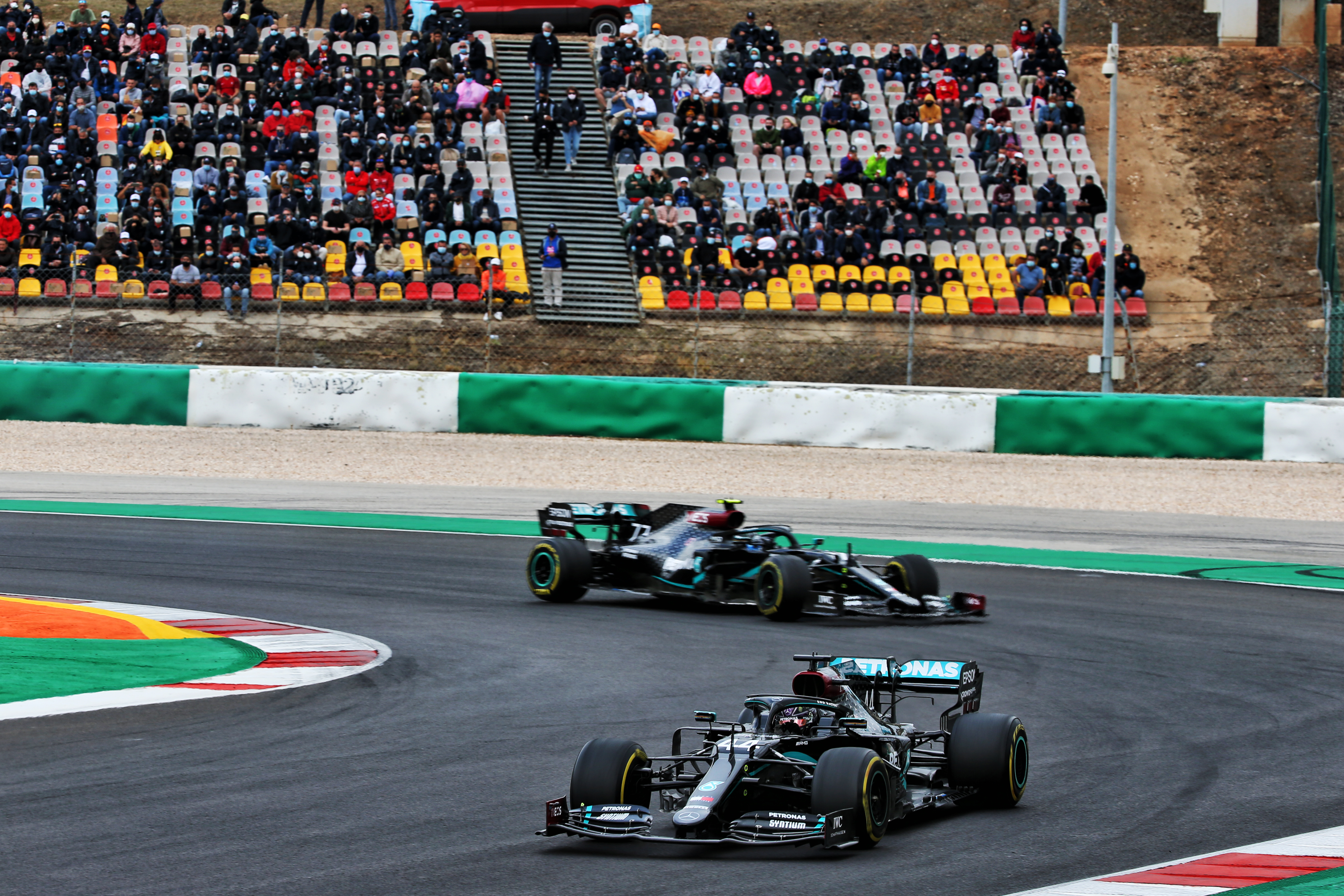
Those who’d pushed on the softs – Raikkonen, Ricciardo – were early-stoppers. But this wasn’t shaping up into a two-stop. At these temperatures the tyres weren’t losing performance. Verstappen’s front-left soft was just about finished by the 23rd lap as he was brought in. “I didn’t think the soft was going to be that much of a struggle,” he said. Red Bull broke its own world record for a pitstop at under 1.8s as Verstappen got underway on fresh mediums.
Leclerc ran for another 11 laps after that before coming in to exchange his mediums for a set of hards. That was half-distance and he essentially had no more racing to do – Verstappen out of reach in front, no threat from behind. A genuine on merit fourth, not a retirement-flattered result, Ferrari seems to be making genuine progress.
Perez made a great recovery from his enforced lap-one stop. As the nose had been replaced, his softs were replaced by mediums – so the incident with Verstappen had inadvertently put him on a much better tyre strategy. He’d yet to stop again as the Mercedes pair were pitted on laps 40 (Hamilton) and 41 (Bottas) for their hards.
The timing of these stops was determined by the fact that Bottas was feeling a serious vibration from the front – a sure sign that the tyres were running out of tread. Hamilton, not stressing the fronts as much, was insisting his tyres were still fine. But he was brought in regardless. As Bottas rejoined, he was 12s behind. That gap would double by the flag.
A lap down, the battle for fifth was a tight one. Perez was running there after stopping on the 45th lap and being fitted with a set of softs. But he had no great pace on the softs – and Gasly and Sainz on much older mediums were chasing him down.
Three laps from the end Gasly had a DRS run on the Racing Point and opted for the inside. Perez moved to cover it off very late. Gasly was sawing at the wheel, hard on the brakes, to keep from ploughing into the back of him. Remaining composed, he made the move next time through, a move Sainz repeated a lap later.
On the tail of the Renaults, Vettel was 10th at the end, having won out in his struggle with Raikkonen.
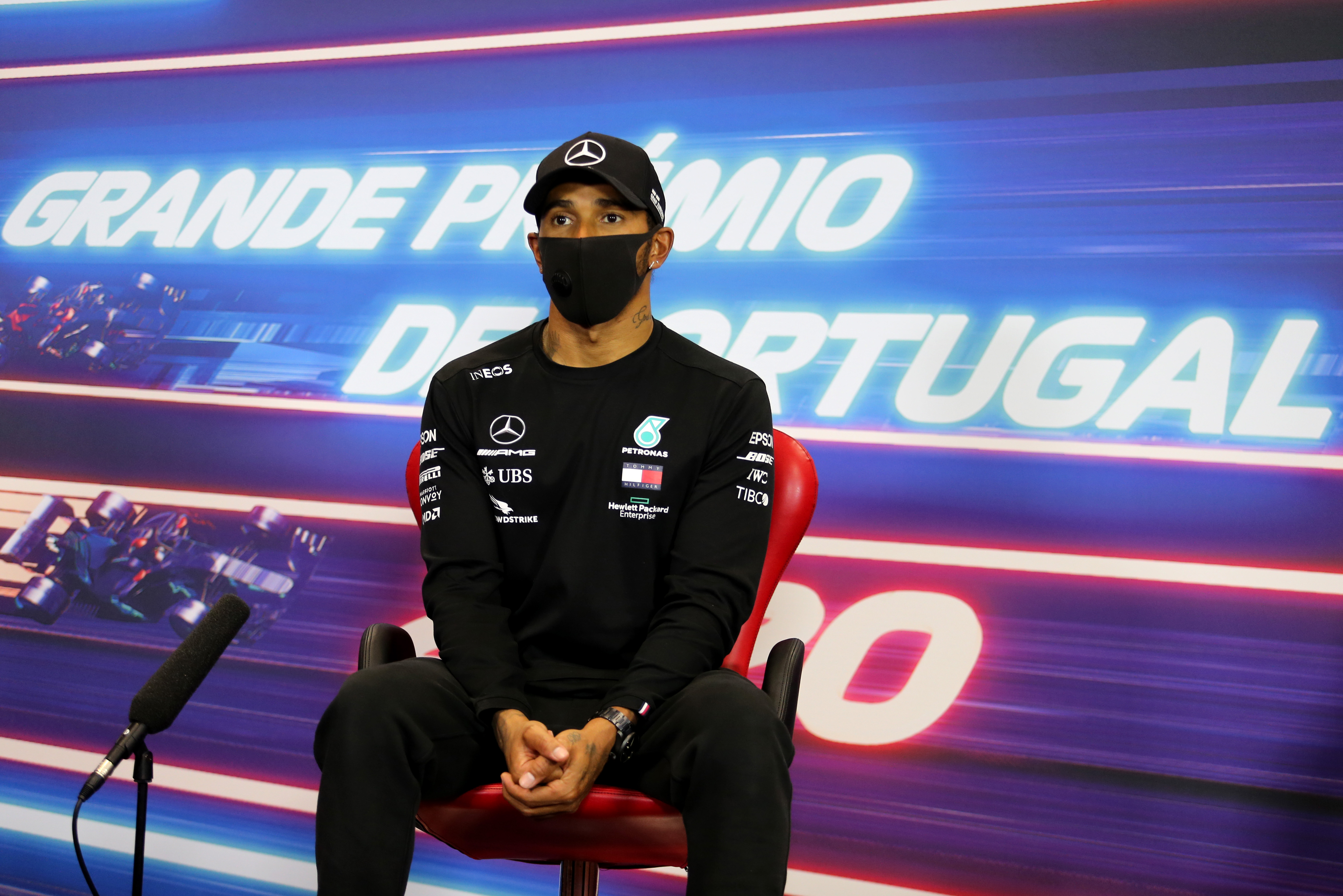
Then the most successful driver of all-time talked about his achievement. “These last few years I’ve studied more than I’ve ever studied. I work with incredible people. People who don’t take no for answer and who don’t sit back on success.
“When I was younger I wasn’t always listened to. But then I came here and changed a bunch of things and they listened to me. I was looking at the cars of Michael [Schumacher] and Nico [Rosberg] and saying, ‘This has gotta change, that has gotta change,’ and they listened to me.
“At first, I didn’t have the qualities to be a team leader. What 22-year-old does? Now, we’re leaders together. I know where to pick, which questions I need to ask. It comes with experience.”



